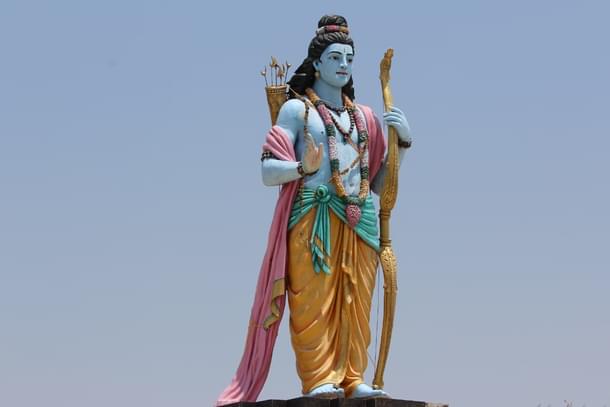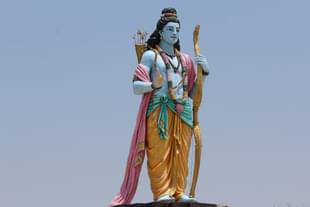Commentary
All Of Swarajya's Ayodhya Coverage - In One Place
Swarajya Staff
Jan 22, 2024, 12:07 AM | Updated Jan 23, 2024, 11:24 AM IST
Save & read from anywhere!
Bookmark stories for easy access on any device or the Swarajya app.


Over the last two-three months, in the run-up to the prana-pratishtha ceremony in Ayodhya, Swarajya has tried to bring you stories which tell what is happening on the ground in Ayodhya, what is happening in the heart and minds of people, and what happened across the realm of time all those years ago when the Ram Janmabhoomi movement exploded on the socio-political field of India.
Here, in one place, is all of Swarajya's coverage building up to the opening of the Ram Janmabhoomi Mandir.
The sacrifices
1. Sumati Mehrishi narrates the story of Thakur Gurudutt Singh, whom Ashok Singhal regarded as the 'first karsevak'. It was Thakur saab who ensured that once Ramlalla was established at the site on a night in 1949, no one could his murti anywhere else.
2. Sharan Setty went to Ahmedabad to meet the families of the victims and survivors of the Sabarmati express tragedy of February 2002. 'Dard hai, dukh hai, par garv hai' (there is agony, there is grief, but we are proud), they told him.
3. Swati Goel Sharma traced the story of the immortal sacrifice of the Kothari brothers across Kolkata and Ayodhya. This story contains some previously unseen images, and previously unreported facts, about what happened on that tragic day of 2 November, 1990.
4. The story of Vasudev Gupta, the first karsevak fatally shot in police firing.
5. Rajendra Dharkar was just 17 when he was felled by a police bullet in 1990, during a 'karseva incident'. This is probably the first and only report on him in the English-language Indian press.
6. Eyewitness account: Ayodhya journalist recalls 1990 police firing on karsevaks near Ram Janmabhoomi (last three stories also by Swati Goel Sharma).
7. Five hundred years ago, this community in Ayodhya stopped wearing head- and foot-wear after losing the Ram Janmabhoomi to invaders. The pran pratishtha ceremony marks the fulfillment of a civilisational vow and the Suryavanshi Rajputs donning turbans and shoes once more.
8. Preparing for the worst, Hindus in Bangladesh anticipate a repeat of 1992 as Ayodhya gets ready for the inauguration of the Ram Mandir. (Jaideep Mazumdar)
The city and the temple
1. A pictorial and descriptive tour of Karsevakpuram in Ayodhya, which was once a hideout for karsevaks, and has now transformed into a VHP office and a workshop for crafting pillars and murtis for the Ram Temple. (Swati Goel Sharma)
2. A ground report on how Ayodhya residents are embracing the city's infrastructure development and civic transformation.
3. A note of caution to devotees all across India and the world—the temple is ready, but the Ayodhya city needs more time. Please plan your darshana trip keeping that in mind.
4. A detailed interview with the architects of the Ram Mandir, the Sompuras of Ayodhyas. The story goes that their ancestors received the divine gift of temple architectural artistry from Vishwakarma Dev himself and since they residents of the Moon, Brahma Dev summoned them to come to Earth to continue the sacred practice of building temples.
5. Every Ram Navmi, the rays of the Sun will grace the forehead of Ramlalla at the new Ram Mandir. Here's how that will happen
6. Where master sculptors recount their experiences crafting the idol of Ramlalla in Ayodhya, from stone to sanctum (last five stories by Ankit Saxena).
7. A ground report on the temples and sites which became the refuge for devotees seeking strength and solace when Ramlalla didn't have a temple of his own (Sumati Mehrishi).
8. On the intervening night of 22 and 23 December, 1949, Ramlalla had 'miraculously appeared' beneath the central dome of the disputed structure at Ram Janmabhoomi. Since then, a Prakatya Mahotsav is celebrated every year in Ayodhya to mark the event (Swati Goel Sharma).
9. Sumati Mehrishi narrates the story of how a monkey prevented a bomb blast at the Hanuman Garhi temple.
The history
1. The untold story of a 1934 clash in Ayodhya and en masse fines imposed on Hindu families after cow slaughter led to an attack on the Babri structure. Numerous Hindu families had to sell off valuables, and even utensils, to pay the due fines.
2. A profile of Iqbal Ansari, the Babri 'mosque' litigant who received first invite to Ram temple's bhoomi pujan (last two by Swati Goel Sharma).
3. Venu Gopal Narayanan dissects a book from the early 1990s in which academic luminaries of the day concocted blatant lies to prevent a peaceful settlement of the Ayodhya dispute.
Aravindan Neelakandan's series on Ayodhya
-Ayodhya: The movement before the movement
-Ayodhya - When the RSS and BJP joined the movement
-Ayodhya: Why 1989-1990 was an important period
-Ayodhya: Ashok Singhal and the immeasurable value of that first brick
-Ayodhya: Everything that happened before 30 October 1990
-The sacrifices that sealed a commitment — 'Mandir Vahin Banayenge'
-Ayodhya: Why we should be ever grateful to Dr K.K. Muhammed's courage
-Ayodhya: When one side came to the table with clinching evidence but the other side didn't show up
Shri Ram - the hero, the icon, the avatar
1. Best-selling author Amish Tripathi on why Ram is the civilisational hero of India.
2. Venu Gopal Narayanan on why the Ram Mandir marks a return to the Indian normal — the logic of Dharma.
3. Priyank Chauhan on why the character and ideal of Shri Ram fulfills a deep civilisational search and yearning for values.
Pran Pratishtha: The event, its importance in history
1. Aravindan Neelakandan delves on two questions:
-What is the role and place of the Shankaracharyas in contemporary Hindu society and the choices it makes?
-What is to be made of the view of two Shankaracharyas who say that Narendra Modi is not the right person for the prana-pratishtha ceremony?
2. Vikas Saraswat on why the construction of Ram Mandir marks the healing of what V.S. Naipaul called 'a wounded civilisation'.
3. Harsh Madhusudan Gupta on where 22 January 2024 stands in global history and why the date marks the moment in time when paganism, pluralism turn the tide against monotheism.
4. Sumati Mehrishi on how Ram's sasuraal, Janakpur in Nepal, is gearing up to celebrate the big day.
The journey continues
1. Finally, R Jagannathan on why the Rama temple inauguration is only a milestone for Hindutva and NOT its end objective. A strong Indian state, a prosperous economy, pulling people out of poverty, a powerful Indian military etc. is as much a part of Hindutva as the Rama temple.





